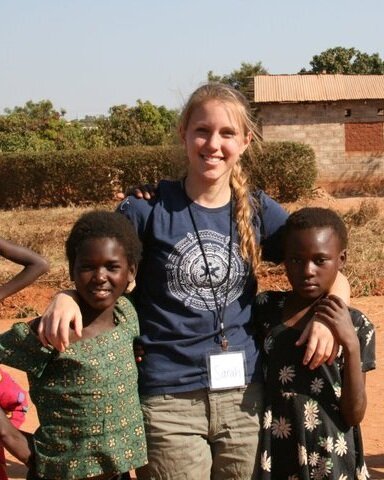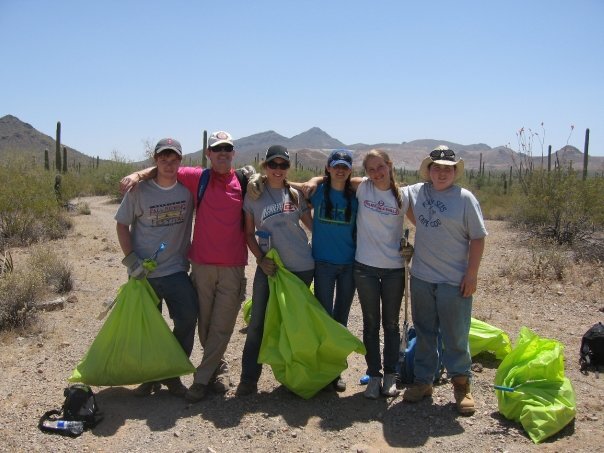Kizimkazi Ethical Dolphin Tour boat drivers receiving their uniforms
Ethical Kizimkazi Dolphin Tours
zanzibar
I started the Kizimkazi Ethical Dolphin Tours in October 2018 with the help of African Impact and certified ethical local boat drivers. Dolphin tourism in Zanzibar has a very bad reputation as being a “dolphin chase,” having too many boats driving dangerously, without regulations, around a pod of dolphins. An important aspect of the Dolphin and Marine Conservation Project is the Ethical Boat Driver Training Program. This program is comprised of 5 lessons and a final practical driving exam on the water. The training curriculum covers environmental education, customer service, business practices, and most importantly, ethical boat driving rules and regulations. Our ethical driving protocols are based on international regulations and common sense rules to maintain proper speed and distance from the dolphins, improve tourist habits when interacting with a pod of dolphins, and understand dolphin behavior in their natural setting.
During my first months as Project Manager, I noticed we had a growing number of ethically certified drivers, but they weren’t getting additional customers, marketing their tourism business, or generating a profit after our training. In response to these challenges, I created the Kizimkazi Ethical Dolphin Tours as a way to put their new training and skills to work to generate a sustainable income while protecting the dolphin population in the Menai Bay Conservation Area. We put together business plans, a Facebook page, social media posts, and grassroots awareness campaigns. After actively promoting to tourists, hotels and travel agencies throughout the island, the ethical tours are now an environmentally friendly and cost effective alternative.
Ethical Boat Drivers.
During my time as Project Manager, I grew the tours to 6 hotel partnerships, 3 travel agency partnerships, and numerous individual bookings. As part of the business plan, I raised funds for new snorkel gear, and for t shirts and hats with the Ethical Tour logo for our boat drivers (pictured above). Now these fabulous boat drivers are setting positive examples within their community, operating and promoting ethical tours themselves, and are contributing to the protection of the marine environment they rely so heavily on. These drivers show incredible dedication to their work, resulting in great reviews for the Kizimkazi Ethical Dolphin Tours and making dolphin interaction a much better experience in Zanzibar.
32.5L a Day, August Fundraiser
zanzibar
After interning in Zanzibar, I made fresh water resources and accessibility the topic of my masters thesis. The most astonishing finding of my research was the water usage of local Zanzibarians versus tourists. As the tourism industry grows on the island and the government encourages “fivestar tourism,” the amount of water needed for everything from pools, landscaping, and laundry to food production and number of showers is growing. My research and calculations concluded that the average villager in Jambiani (my village) uses 32.5 liters of water per day, while the average tourist uses 685 liters of water per day.
20L jug
After living in Jambiani for 3 months, I saw this difference in water usage firsthand. Jambiani village has one single pipeline that runs through the entire village, supplied from one water storage tank that holds less water than the country mandates per village. In 2017, the pipeline ran dry twice a week during the tourist season, leaving nearly 7,000 people without fresh water. Research showed that 99% of wells in Jambiani tested for high salinity levels, making the water undrinkable. Returning a year later, the situation was much worse. The pipeline ran dry for weeks at a time, fresh water was scarce, and beach front hotels were diving villagers farther into the forest where there were no wells or pipeline accessibility.
As a member of the village, I was going to live like a villager and use no more than 32.5 liters of water per day for one month and raise funds for a new well and water storage tank. I got my 20 liter yellow jug, filled it every day for 30 days for personal use, cooking and cleaning. Promoting my fundraiser on social media for 30 days, I raised $3,500, used the funds to build a well and purchased a 5,000 liter water tank for the community center. The new well provides fresh water to 400 people that live farther inland without access to the single village water pipeline. The tank, which collects rain water and stores water from the new well, provides water for the Jambiani Community Center and community garden. I’m very proud of my accomplishments for the village. These 30 days in August not only gave me the means to give back to my community, but showed me how easy it is to reduce daily individual water use.
5000L tank purchased through fundraising
2 Subadult lions, Naboisho Conservation Area, Kenya
Kenya Wildlife Conservation Volunteer
naboisho conservation area, kenya
In February 2019 I had the amazing opportunity to volunteer at another African Impact project in Kenya. The Kenya Wildlife Conservation Project is located in the Naboisho Conservation Area, one of the many conservation areas that border the Masai Mara National Park. I spent every day in the vehicle, going on multiple game drives to monitor the big cats, elephants, and do grass and woodland game counts. All of the data collected by volunteers on project goes directly to wildlife conservation efforts.
The most breathtaking experience during my two weeks was being about 10 feet away from a sleeping male lion at dusk. We watched him for about ten minutes when he finally started to call to the nearby female cats. I could feel the vibration of every roar through the car and my whole body, and it’s an experience that is hard to put into words. I also got to see the Big Five which was an added bonus!
Jambiani Cookbook
zanzibar
As an intern in Zanzibar in 2017, I was responsible for project fundraising. Due to my general love of food and my great enjoyment in eating every local dish in Zanzibar, I had the idea to create a cookbook. I put together recipes from our chefs at African Impact and our local women’s group, the Kanga Ladies, as well as pictures of all the dishes. Unfortantely, I only had time to finish the first draft, not getting to test the recipes or publish it. However, when I returned as a Project Manager, our office decided that this would still be a great fundraising initiative. With the help of another project intern, the cookbook was finally finished and is now sold to volunteers as a way to raise project funds on the ground. Volunteers love being able to have the flavors of Zanzibar back home, and now I do too!
Chapati recipe taken from cookbook.
Naboisho Conservation Area, Kenya
Youth building a water detention basin for a parking lot in Santa Fe
Youth Adviser
high school youth group
Wellesley congregational church
Water canal on a farm outside Santa Fe
After graduating from the University of Maryland, I returned to my hometown and became involved in the same high school youth group I was apart of years prior. I served as an adviser for two years, attending weekly Sunday night meetings as well as leading the annual volunteer trip in April. Both years we traveled to Santa Fe, New Mexico to learn about water conservation, water reuse, and build houses. During this trip, I was responsible for six high school students within my own work group, but was an adviser to a group of 30. This required patience, organization, and a calm manner, but it also reconnected me with my earlier interest in water resources.
Garden lessons at a Santa Fe elementary school
Friends of Fumbelo
wellesley, ma, zambia
Fumbelo woman and children
Friends of Fumbelo is a 501c3 charitable organization committed to providing education, medical care, and support for the children of Fumbelo Village in Zambia.
Paper bead making
Once a year, Friends of Fumbelo members travel with supplies to enhance their three major programs: support of children impacted by AIDS through all levels of education, bimonthly medical visits to the village, and a daily lunch program for every child. After participating on two trips, I was asked to become a Board Member in 2015.
Two children supported by Friends of Fumbelo
Terps for Change
University of maryland
Terps for Change is a club on campus with a mission to connect the University with the surrounding community through service learning, working together to understand the causes of social issues and create sustainable solutions. During my two year involvement, I focused my efforts on removing invasive plant species from conservation areas on campus with the Maryland National Capital Park and Planning Commission. We educated ourselves on the types of invasive species in these areas, recorded the locations of plants, and volunteered in teams to remove them. While not a longterm solution to the problem, it was a great volunteering and educational experience on the weekends.
Two teenage girls in Fumbelo, Zambia.
Fumbelo, Zambia
wellesley congregational church
What is now a registered nonprofit organization, Friends of Fumbelo was formed in 2008 through the Wellesley Congregational Church as a partner community for the village of Fumbelo, located just outside of Lusaka, Zambia. Once a year, members take a trip to Fumbelo, bringing educational, sport, medical, and clothing donations to the children and women of the village. While they are there, members focus on growing the three main programs of education, medical care, and daily school lunches.
The sole well in Fumbelo, 2011.
During the summers of 2010 and 2011, I traveled with Friends of Fumbelo to Zambia. Many weeks spent talking to local women, teaching preschool children, planting and harvesting produce for the school, and servicing the one village well inspired me to focus on environmental policy and African studies at the University of Maryland.
Border clean up south of Tuscon
Tuscon, Arizona
high school youth group
wellesley congregational church
While in high school, I traveled on 4 different volunteer service projects over the span of 4 years. The most influential was the week spent in Tuscon, Arizona in 2008. During the week, our group participated in community cleanups along the country border, learning from the perspectives of past immigrants, U.S. citizens, and activists supplying food, water, and general aid to anyone struggling to survive in the desert. We farmed with a Sudanese refugee group in a Tuscon community garden, learning about their culture, community, and how they were adjusting to life in a different country. The aspect that makes this trip standout to me, however, was constructing grey water pipe infrastructure and drainage basins for a veterans home outside of the city. This was my first time hearing the term “grey water”, or even “water reuse”, but the concepts made me question my own water use and how I could practice conservation in my own life.



















